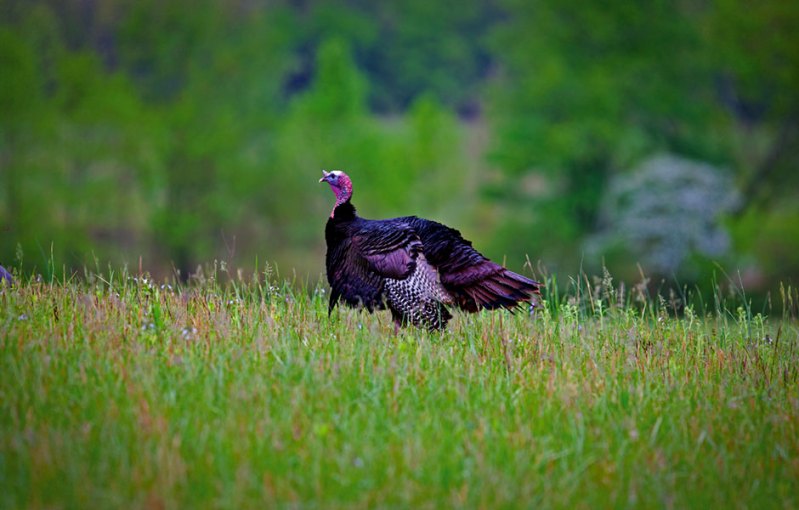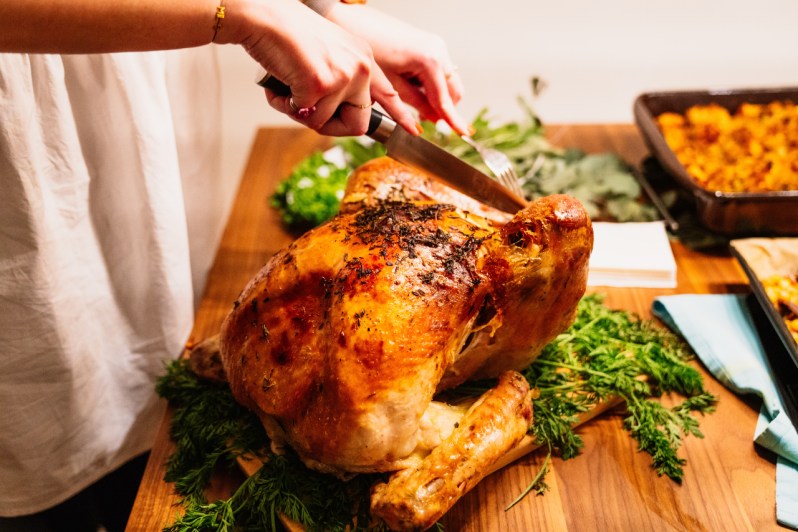Aren’t supply chain issues fun? First, the bottleneck came for your Champagne and Sriracha. Now, it’s coming for your Thanksgiving turkey.
It’s expensive out there, we know. Thanks to a global health crisis and economic recession, even a loaf of bread is far from cheap these days. That’s why we’re trying to set you up with helpful advice on grocery shopping and the like so you can navigate the new normal.

With the holidays on the horizon, we’re all asking the same question: Is there a turkey shortage? The answer is yes, but it’s a little more complicated than that.
How expensive is turkey (and why)?
As CNBC reports, the price of turkey is up 73% from last year, a pretty astonishing figure. Experts attribute it to the bird flu, which has devastated turkey stocks this year. Apparently, the disease normally doesn’t flourish during the summer as farmers get their holiday flocks together. But, you know, the 2020s haven’t been easy so naturally, the flu hit hard right in the middle of the year when it could do the most damage.
What’s so brutal about avian flu is that in order to deal with it, farmers are forced to kill their entire flocks. The same CNBC report suggests that 5.4 million birds were killed from January to July of this year alone. Hence, a lower stock of meat and significantly higher prices per pound.
The pandemic has played its role too. It has caused severe labor shortages over the last couple of years, making the cost of raising a turkey all the more expensive (less help on the farm, more expensive feed at the farm store, higher gas prices for shipping, etc.). And for farmers to survive, at least the ones who haven’t had to put down their entire flock, they’re forced to pass those costs along.
It’s important to keep in mind that all viruses evolve, not just COVID. The current version of the avian flu, like Omicron, is highly contagious. Most U.S. states have documented the presence of the flu (42 and counting). Per the USDA, the top turkey-producing states are Minnesota, North Carolina, Arkansas, Indiana, Missouri, Virginia, Iowa, and California.
Who is affected?

In short, everybody. Restaurants are already struggling to get their hands on the stuff. Outfits from Texas barbecue joints to white table NYC eateries are dealing with the lack of supply. There’s huge commotion for turkey this time of year, as some 80% of the year’s turkey supply is bought around the holidays. Looking at the math, the situation isn’t great for fresh whole birds, especially as we get into November.
That’s not to say it’s impossible to get one, it’ll just cost more and likely be smaller in size. Most in the know seem to think the shortage will last well through 2022, so you may want to dream up some backup dinner ideas. However, in the meantime, it’s very much worth looking into your local, smaller producers that may have been able to avoid an outbreak. With smaller, more protected flocks, there’s a decent chance they are faring okay and would love to sell you some meat this Thanksgiving.
What are some good alternatives?
Turkeys are delicious but there is no rule that says that’s what you have to eat during the holidays. There are many other great and festive options, from smaller game hens to showy dishes like rack of lamb. Shoot, you can even keep it a bit lower-brow with a handful of beer can chickens on the grill. Prime rib and beef tenderloin and great options too, as they’re a bit more decadent and celebratory.
Fortunately, we live in an era that’s fully embraced plant-based proteins. That said, there are some great meatless options out there that will still give you some great flavor and consistency, not to mention complement dishes that would normally pair well with poultry. The bottlenecks haven’t come for your gravy, mashed potatoes, and stuffing, as far as we know.
Seafood can be a great option too, although good luck finding much crab this year. Look for other high-end options, like scallops, Salmon, halibut, and oysters. Reach out to your local fishmonger and see what’s in season and plentiful. Go Italian-American and make a giant back of Cioppino.
The dinner table might look a little different this year, but you’ll still have great company, all the proper sides, and maybe even a Thanksgiving cocktail or two.


